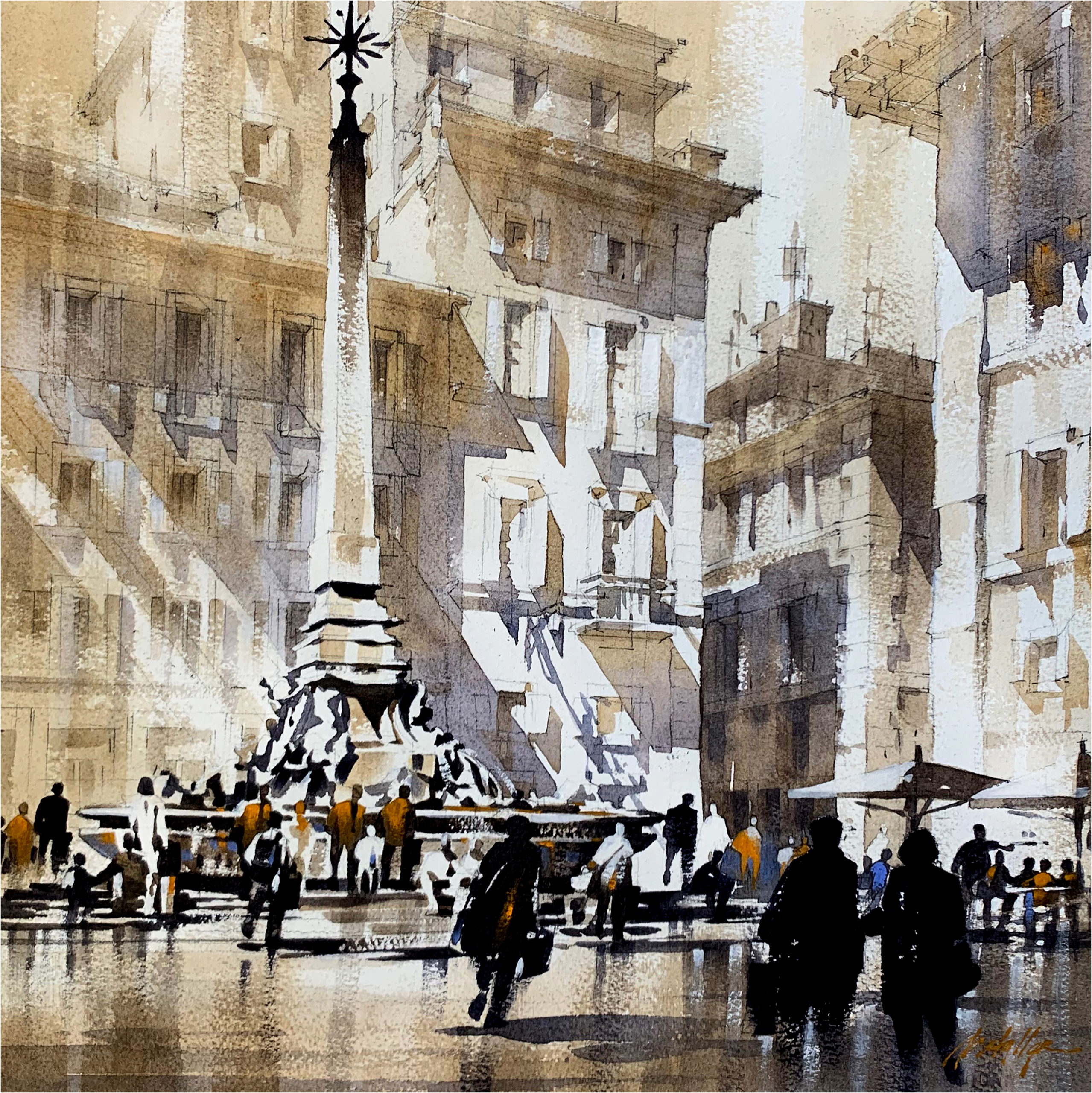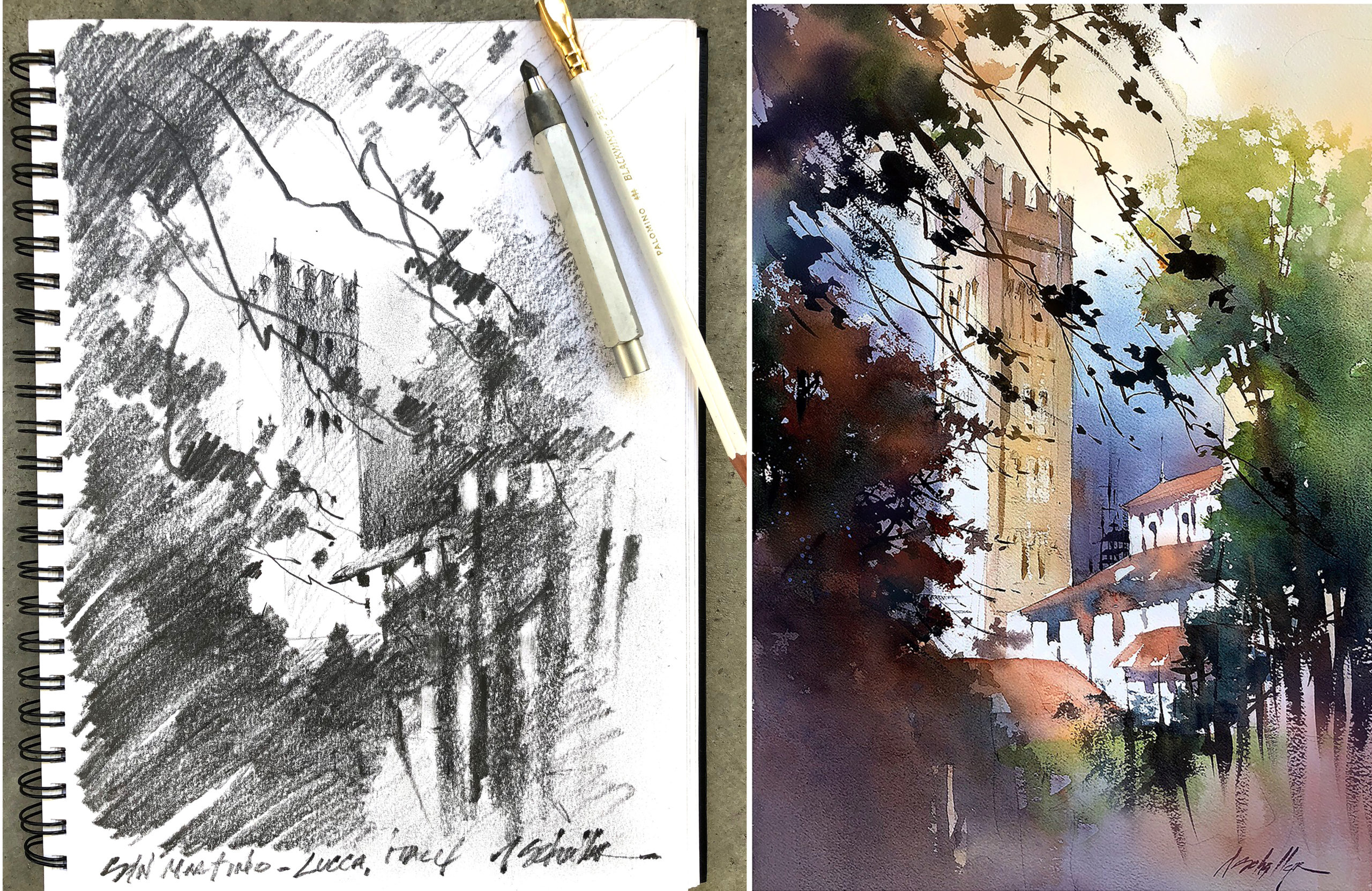I’ve been enthralled by drawing in perspective since I was about 6 years old, so I guess it’s second nature to me. But I don’t think that absolutely accurately drawn perspective in a work is either necessary or even desirable. In fact, works that are too precise can look forced, stiff, and mechanical.

Perspective is just a tool that the painter can use if it helps tell the story at hand. All you really need to remember is that since you are drawing on a flat sheet of two-dimensional paper, perspective is just an illusion of the third dimension — depth. From there, it’s common sense. If you consider two things of equal size, the one farther away will tend to look smaller than the one more near. And things that are at a distance tend to look less distinct than those that are closer to us. It can all become far more complex of course, but it really doesn’t need to.

In my classes I teach that there are two primary ways of establishing perspective in a painting — the mathematical way of setting lines and vanishing points, and the more expressive and communicative way of layering three basic values. If areas of light, dark, and mid-tone are composed effectively, the illusion of depth and dimensionality appears almost as if by magic.

Join Thomas Schaller this Thursday (December 8) at 2 p.m. EST for a special live conversation about Accessing Your Imagination and other great advice.








Thank you for the video by Michael Holter, very interesting with lots of tips!
Love the look of this artist !